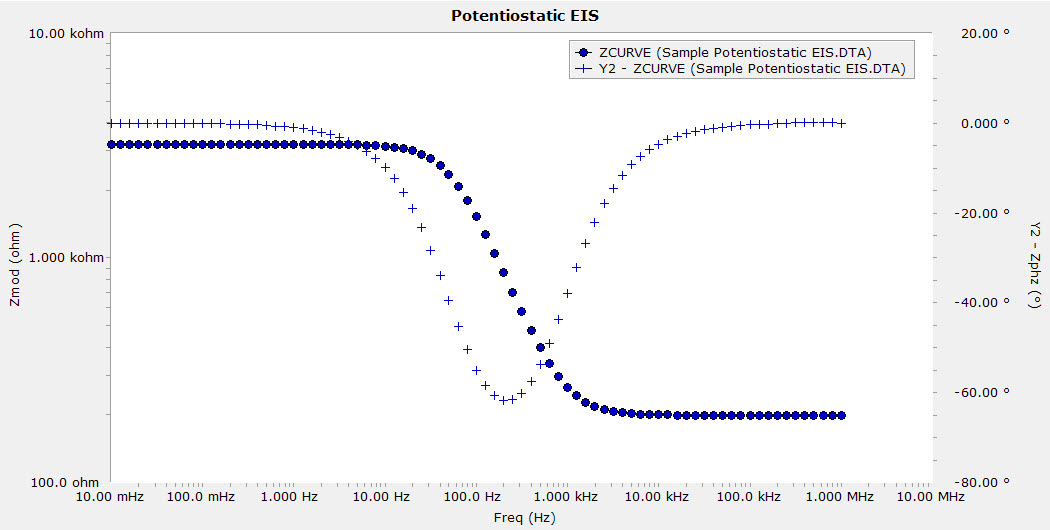Impedance Analyzer: Unveiling the Hidden Secrets of Electrical Impedance

The field of electrical engineering is vast and ever-evolving, with numerous tools and technologies designed to analyze and measure the complex world of electrical systems. One such indispensable tool is the impedance analyzer. Impressively versatile, this device allows engineers and researchers to delve into the hidden secrets of electrical impedance, unraveling the characteristics that define the behavior of circuits and components.
At its core, an impedance analyzer is a sophisticated instrument that measures the impedance of an electrical circuit or component. However, its capabilities extend far beyond simple measurement. With its ability to examine impedance across a wide frequency range, an impedance analyzer provides valuable insights into the frequency-dependent behavior of different components. This makes it an essential tool for professionals across various industries, spanning electronics, telecommunications, power systems, and beyond. By unraveling the intricate relationship between voltage, current, and impedance, an impedance analyzer helps engineers optimize the performance of their designs and troubleshoot any potential issues.
In this article, we will delve into the inner workings of impedance analyzers, exploring the key principles that underpin their operation and the wide range of applications they enable. From understanding the fundamentals of impedance to exploring the various measurement techniques employed by these analyzers, we will showcase the power of this tool in unraveling the hidden secrets of electrical impedance. Join us as we embark on a journey to grasp the intricacies of this essential instrument, with its potential to revolutionize the way we analyze and design electrical systems.

Understanding Electrical Impedance
Electrical impedance is a fundamental concept in electronics and plays a crucial role in the analysis of electronic circuits. electrical impedance tomography refers to the opposition that an electrical circuit presents to the flow of alternating current (AC). Impedance is represented by a complex number and consists of two components: resistance and reactance.
Resistance is the opposition to the flow of current and arises from the dissipative elements in a circuit, such as resistors. It is responsible for converting electrical energy into heat. Reactance, on the other hand, is the opposition to the change in voltage or current and arises from the energy storage or release elements in a circuit, such as capacitors and inductors.
The combination of resistance and reactance determines the overall behavior of a circuit and can be expressed using impedance. By analyzing the impedance of a circuit, we can gain valuable insights into its characteristics, such as the frequency response, resonance, and stability.
An impedance analyzer is a powerful tool used to measure and analyze the impedance of electronic components and circuits. It provides detailed information about the circuit's impedance magnitude and phase over a specified frequency range. This allows engineers and researchers to understand the behavior of electronic devices, troubleshoot problems, and optimize circuit design.
With an impedance analyzer, you can unveil the hidden secrets of electrical impedance by examining the response of a circuit to different frequencies. By studying the impedance characteristics, engineers can make informed decisions during the design and development process, ensuring optimal circuit performance.
In conclusion, electrical impedance is a vital concept in electronics that helps us understand how electrical circuits respond to alternating current. An impedance analyzer enables us to delve into the hidden secrets of impedance, providing valuable information for circuit analysis and design optimization.
Working Principles of Impedance Analyzers
Impedance analyzers are sophisticated electrical instruments that have the ability to reveal the hidden secrets of electrical impedance by employing advanced analytical techniques. These analyzers work by applying a known test signal, usually a sinusoidal waveform, to the device under test (DUT) and measuring the resulting response. The measured response is then analyzed to extract valuable information about the underlying electrical properties of the DUT.
The first step in the working principles of impedance analyzers is the generation of the test signal. This signal is carefully controlled to have known characteristics, such as frequency, amplitude, and waveform shape. It is then injected into the DUT through the analyzer's output terminals. By utilizing a range of frequencies, impedance analyzers can effectively scan and analyze the DUT's impedance behavior across different frequency points.
Once the test signal is applied, the analyzer measures the response of the DUT, which includes both magnitude and phase information. This response is captured using precise instruments, such as voltage and current sensors, and is then processed to extract relevant impedance parameters. These parameters may include resistance, reactance, admittance, capacitance, and inductance, among others, depending on the specific type of impedance analyzer.
To accurately analyze the impedance of the DUT, impedance analyzers employ various mathematical algorithms and signal processing techniques. These algorithms help in separating the desired impedance information from unwanted noise or distortion present in the response signal. The extracted impedance parameters can then be graphically displayed or further analyzed for detailed characterization, troubleshooting, or quality control purposes.
By utilizing the working principles of impedance analyzers, engineers and researchers can gain valuable insights into the electrical behavior of components, circuits, and systems. This allows for efficient design optimization, performance evaluation, and fault detection, ultimately leading to better understanding and advancements in various fields of electrical engineering and beyond.
Applications and Benefits of Impedance Analysis
Impedance analysis is a powerful technique that finds wide-ranging applications across various fields. This analytical method holds immense value in disciplines such as electrical engineering, biomedical research, and materials science. By dissecting the complex nature of electrical impedance, an impedance analyzer unveils hidden secrets and provides crucial insights. Let's explore some of the key applications and benefits of impedance analysis.
In the field of electrical engineering, impedance analysis plays a vital role in circuit characterization and design optimization. By measuring and analyzing impedance at different frequencies, engineers can evaluate the performance of electronic components, circuits, and systems. This helps in identifying issues related to signal integrity, power consumption, and stability. With the insights gained from impedance analysis, engineers can refine their designs and enhance the overall efficiency and reliability of their electrical systems.
Biomedical researchers extensively employ impedance analysis to study biological tissues and cells. This technique allows scientists to probe the electrical properties of living organisms, aiding in the diagnosis and treatment of various medical conditions. Impedance analysis can be used to monitor changes in tissue properties, such as cell morphology, hydration levels, and tissue dielectric characteristics. By correlating these changes with disease progression or response to therapy, researchers can develop non-invasive diagnostic tools and personalized treatment approaches for improved patient outcomes.
Materials science is another field that greatly benefits from impedance analysis. By examining the electrical response of materials, scientists can gain valuable insights into their physical and chemical properties. Impedance analysis helps in understanding processes such as charge transport, ion diffusion, and interface phenomena in materials. This knowledge is crucial for developing advanced energy storage systems, optimizing battery performance, and designing efficient sensors. Impedance analysis allows materials scientists to unlock the hidden secrets of electrical behavior, opening new avenues for innovation and technological advancements.
In summary, impedance analysis offers a multitude of applications and benefits in diverse areas of study. From circuit design optimization in electrical engineering to diagnosing diseases in biomedical research, and from exploring material properties in materials science to enhancing energy storage systems, impedance analysis provides valuable insights and unravels the hidden secrets of electrical impedance. Its versatility makes it an indispensable tool for researchers, engineers, and scientists, driving progress and innovation across various fields.
